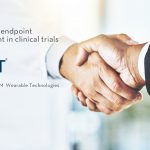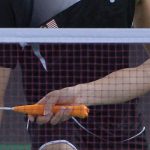OHSU uses APDM Mobility Lab to Find Best Predictors of Fall in Elderly
An ongoing study conducted by Oregon Health and Science University using APDM technology is finding the best predictors of fall risk in the elderly.
As the study states, falls are a leading cause of serious injury and loss of mobility in the growing elderly population. Measuring a person’s balance and gait with inertial sensors may offer a more accurate way to predict fall risk than commonly used clinical assessments.
The study is measuring balance and gait in a group of over 400 elderly men who are part of the Osteoporotic Fractures in Men (MrOS) longitudinal study to develop a Fall Risk Score. The men were tested with Instrumented Stand and Walk (ISAW), a test developed by APDM Chief Scientist and OHSU Balance Disorders Lab Director Fay Horak.
So far, the study is finding that Postural sway may be more sensitive than gait speed to discriminate older fallers. Combinations of objective posture and gait metrics may be superior to any one metric as a fall predictor.
The tables below indicate findings from the study.

Frequent Fallers had worse gait and balance metrics – Median and interquartile ranges illustrated for three primary metrics – gait speed, sway velocity, and AP trunk range of motion.

Adding a Dual Task worsened metrics in each group, but was not more affected in frequent fallers – Plots illustrate normalized magnitudes for each metric. Blue shaded areas – single task. Pink shaded areas – dual-task. Difference between the two colors is the dual-task cost. Note the smallest dual-task cost was for frequent fallers (2+), due to the single-task measures (blue) being more abnormal in this group.

Sway metrics better predicted fallers than gait speed – ROC curves were made comparing Fallers (2+) vs. infrequent/non-Fallers. All sway metrics had higher AUC than gait metrics. The AP trunk RoM in gait and sway velocity in stance had the best combined AUC. We present the model as proof of principle that the combination of balance and gait metrics across multiple domains could be stronger predictor than using gait speed alone.
Study by
Patricia Carlson-Kuhta (1), Martina Mancini (1), Jodi A. Lapidus (2), Amy Laird (2), Eric S. Orwoll (3), and Fay B Horak (1,4)
(1) Dept. of Neurology, (2) Dept. Of Public Health & Preventive Medicine, (3) Dept. of Endocrinology, Oregon Health & Science University, (4) VA Portland Health Care System, Portland, OR, USA





